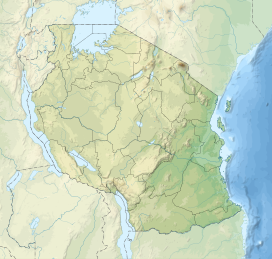Oldoinyo Lengai
| Ol Doinyo Lengai | |
|---|---|

Image of 1966 eruption
|
|
| Highest point | |
| Elevation | 3,188 m (10,459 ft) |
| Coordinates | 02°45′52″S 35°54′58″E / 2.76444°S 35.91611°ECoordinates: 02°45′52″S 35°54′58″E / 2.76444°S 35.91611°E |
| Geography | |
|
|
|
| Parent range | East African Rift |
| Geology | |
| Mountain type | Stratovolcano |
| Last eruption | 2011 to 2013 |
| Climbing | |
| Easiest route | Scramble |
Ol Doinyo Lengai, "Mountain of God" in the Maasai language, is an active volcano located in the Gregory Rift, south of Lake Natron within the Arusha Region of Tanzania. Part of the volcanic system of the East African Rift, it uniquely produces natrocarbonatite lava. The 1960 eruption of Ol Doinyo Lengai led to geological investigations that finally confirmed the view that carbonatite rock is derived from magma.
Ol Doinyo Lengai is unique among active volcanoes in that it produces natrocarbonatite lava, a unique occurrence of volcanic carbonatite. A few older extinct carbonatite volcanoes are located nearby, including Homa Mountain.
Whereas most lavas are rich in silicate minerals, the lava of Ol Doinyo Lengai is a carbonatite. It is rich in the rare sodium and potassium carbonates, nyerereite and gregoryite. Due to this unusual composition, the lava erupts at relatively low temperatures of approximately 510 °C (950 °F). This temperature is so low that the molten lava appears black in sunlight, rather than having the red glow common to most lavas. It is also much more fluid than silicate lavas, often less viscous than water. The sodium and potassium carbonate minerals of the lavas erupted at Ol Doinyo Lengai are unstable at the Earth's surface and susceptible to rapid weathering, quickly turning from black to grey in colour. The resulting volcanic landscape is different from any other in the world.
The carbonatite ash spread over the surrounding grasslands leads to a uniquely succulent, enriched pasture. This makes the area a vital stage on the annual wildebeest beast migration, where it becomes the nursery for the birth of several thousand calves.
...
Wikipedia

